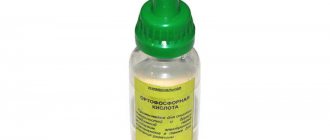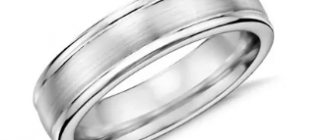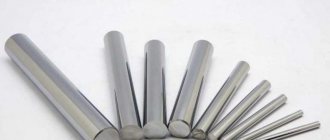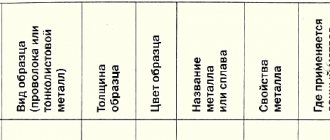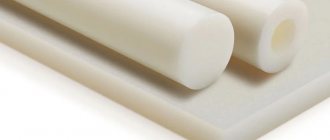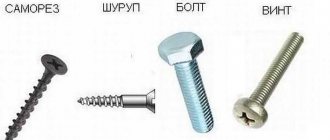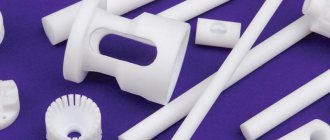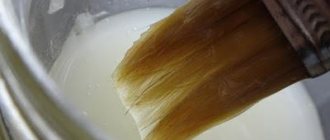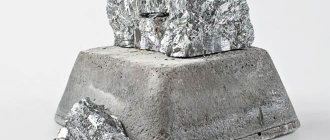Abrasives, substances and tools used for grinding, sharpening, polishing, abrasion and other similar processes of mechanical surface treatment.
The most significant feature of any abrasive process, which distinguishes it from other methods of surface treatment, can be considered the simultaneous participation in the work of numerous, randomly located, very small particles of abrasive material, free (powders) or bound into any product (stone, circle, segment, whetstone, sandpaper, etc.), collectively acting on the surface being processed with their sharp cutting edges, continuously scraping off a mass of the finest shavings from the object.
This aggregate nature of the abrasive distinguishes their work from the work of a cutter and other “massive” cutting tools that have a sharpened cutting part set at a certain angle and produce single, more or less thick chips. An important advantage of the work is the ability to remove a layer of any thickness (up to several microns) from the surface of an object.
What are abrasives
Abrasives
- these are materials characterized by hardness that is superior to other types of materials (even metals). These are solid small particles used in free or bound form (for example, in the form of some form, fixed on a surface, etc.).
Abrasives are designed for mechanical processing of various materials, removing the thinnest layer from them with sharp protrusions of their particles. In fact, any hard structure has abrasive properties in relation to a less hard one. However, only specific types of abrasive materials are used on an industrial scale.
Abrasive grinding wheel
Abrasive wheels are made in the form of very thin sheets and have mounting holes in the center framed in the form of a metal sleeve. To create such discs, various particles and fillers are used in combination with a special binding mass, which can be vulcanite or bakelite. In accordance with the technology, all of the listed components, after mixing, are sent into special molds, after which they are pressed.
There are two types of abrasive wheels:
- grinding;
- cut-off
The former are designed for cutting hard non-metallic and metallic materials, including marble, brick, plasterboard, non-ferrous alloys and others. Grinding wheels are most often used for grinding and sharpening parts made of the same materials.
Both types of abrasive wheels are equally in demand in production. They are used for processing on the appropriate type of machines - grinding and cutting.
The required result when using abrasive wheels is obtained by exposing the sharp tips of abrasive particles, which, during the rotation of the wheel, cut into the surface being treated. Typically, these particles range in size from 100 to 2000 microns. It should be noted that with an increase in the size and hardness of the abrasive grains, the productivity of the wheel also increases.
Abrasive processing of materials
Special abrasive tools are made from abrasives. They, unlike blade (metal) ones, do not have a continuous cutting edge. This function is performed by a solid grain structure, each of the grains is a cutter in it. These abrasive particles are bonded to each other with a binder or combined into some kind of product (it can be a wheel, a stone, sandpaper, a brush), and collectively act on the working surface with their cutting edges, removing the finest chips with them (this layer can be as little as several microns).
Abrasive materials are in demand for different types of processing:
- grinding - can be round, flat, circles, tape, and also preliminary and finishing;
- lapping;
- water jet treatment;
- ultrasonic;
- sandblasting;
- polishing (sometimes preliminary, mirror);
- honing (this is the finishing treatment of internal cylindrical parts, such as automobile cylinders);
- superfinishing (involves minimal material removal);
- tumbling (this is the cleaning of small parts from scale, corrosion, burrs, etc.);
- cutting, cutting;
- sharpening
Vibratory finishing and abrasives for it
Vibrating tumbling is usually called wet processing of products using the tool in question, for which special equipment is used, which must have a water supply and drainage device.
An important characteristic that machines designed for vibratory finishing must have is the presence of a technical process . To perform vibrating finishing, reusable abrasives are traditionally used. As practice shows, one material is enough for several months of active use.
Types of abrasives
Abrasive materials differ in different parameters. Thus, they are classified according to their hardness (there are soft, hard, super-hard), their chemical composition, and grain size (they can be large, medium, fine, extra fine).
Based on their origin, abrasives are classified into three types.
1. Natural (or natural) origin. These are sand, garnet, zirconium, etc.
2. Artificial (or synthetic, industrial) origin. These materials are manufactured specifically for abrasive processing. The most common are artificial diamond, silicon carbide, boron, electrocorundum, cubic boron nitrite.
3. Abrasives from production by-products: agricultural residues, slags from metal smelting (for example, nickel slag), from the operation of power plant boilers. These materials are available, have a variety of particle sizes, and are low in cost.
Abrasive minerals
Abrasives can be classified as natural or synthetic. When discussing abrasives, natural materials are traditionally considered superior, but advances in materials technology have meant that these differences have become less noticeable. Many synthetic abrasives effectively replace natural minerals, differing only in that the synthetic minerals are man-made rather than naturally occurring. Additionally, impurities in natural minerals can make them less effective.
Some natural abrasive minerals:
- Calcite (calcium carbonate)
- Corundum
- Diamond dust (synthetic diamonds are widely used)
- Pumice
- Sand
Some abrasive minerals (such as aluminum oxide, zirconium oxide) occur naturally, but are quite rare, or their development is more labor-intensive/expensive than obtaining synthetic analogues.
Here are some artificial abrasives:
- Borazona (cubic boron nitride or CBN)
- Ceramics
- Ceramic Alumina
- Ceramic iron oxide
- Corundum (alumina or aluminum oxide)
- Dry ice
- Glass (powder)
- Abrasive steel
- Silicon carbide (carborundum)
- Zirconium (aluminum oxide)
Natural abrasives
Let's look at some of the natural abrasives.
Diamond is the hardest of natural materials, consisting of pure carbon. In nature, it is found, as a rule, in the form of a scattering of crystals. Diamonds can be either jewelry or technical (they are used as abrasives).
Pomegranate
is a mineral consisting of aluminosilicates of lime, magnesia and other impurities. It can be painted in different colors, with the exception of blue. It is used in crushed form: the particles are applied to sandpaper for grinding.
Corundum
consists of crystalline aluminum oxide with impurities, differs in color from bluish to brown. In this case, the hardness of the material decreases with increasing content of iron oxide in it.
Emery
- a mixture of corundum grains with magnesite and other minerals.
Quartz
is silicon oxide in crystalline form. A variety of quartz is flint: it consists of silica and is found in nature in the form of massive rocks.
Pumice
- This is a porous structure of volcanic origin, consisting of silica and alumina.
Chalk
— calcium carbonate, with which fine types of processing (polishing, lapping) are possible.
Purpose of abrasive tools
Abrasive tools have found wide application in many areas of industry and everyday life. It is used in various processing of metal and non-metal surfaces, such as grinding, polishing, trimming, etc. Therefore, materials and devices with abrasive particles are used in the production of machines, instruments, machine tools, parts, bearings, household items (pumice stones and nail files), etc. This category is also actively used in construction work - to remove roughness, unevenness, scratches and chips from the coating.
Artificial abrasives
The artificial abrasive carborundum was first synthesized in 1891 by scientist-inventor Edward Acheson (USA). Today, there are a lot of abrasives of industrial origin, they are used more widely than natural ones. Let's look at the features of the most common of them.
Electrocorundum is produced by reduction smelting from bauxite in electric furnaces. The color of the abrasive varies from gray to red-brown. The material is used to produce a hard abrasive tool.
Silicon carbide is obtained by reducing silicic acid with carbon. The material is highly brittle and is used in powder form or as a tool for processing glass, porcelain and other fragile structures.
Boron carbide
- the hardest synthetic abrasive, used as a paste for grinding very hard surfaces.
Synthetic abrasives and their areas of application
There are numerous abrasive materials, the uses of which vary depending on their properties.
Normal electrocorundum:
- 13A. Circles that are designed for peeling, and their binding is organic. They are used to grind various parts, mainly steel. Just grain can also be used.
- 14A. Tools for general grinding operations. Grains are connected to each other either by organic matter or not.
- 15A. A tool where the grains are held together by ceramics, as well as bakelite. You can sand at high speeds and use soft sandpaper for finishing work.
Zirconium electrocorundum 38A:
- Bakelite in this case holds the grains. The tool is suitable when you need to grind metal workpieces and the processing speed is high.
White electrocorundum:
- 23A. Here the bond is organic, and the tool is convenient for processing steel. There are tools in the form of bars and like pastes, as well as simply loose grain, which is used for finishing.
- 24A. Materials made in the form of circles and bars for grinding parts that have undergone a hardening process. The structure can contain both powders and grains. They also make skins for finishing work.
- 25A. Under this brand, tools are produced in blocks and in the form of circles, and the body consists of grains and powders of various sizes. It is possible to refine steel elements that were previously hardened when higher processing speed was needed. It is also possible to work with steels that are difficult to process.
Titanium chromium electrocorundum 91A, 92A:
- This tool is good at grinding and peeling metals, and even removing a thick layer from them. The grains in such instruments are secured with ceramics and bakelite. It does not matter what type of metal - hardened or unhardened.
Monocorundum grades:
- 43A. We can say that such a high-quality tool does a good job when you need to process steels that are difficult to grind. It also takes alloys of such metals. And it is made from powders and grain fractions. Ceramics bind these materials into a form.
- 44A, 45A. The sandpapers made from these grades of abrasive are soft and excellent for sanding when polishing and finishing is needed. In installations such as sandblasting, simply grain can be used.
Spherocorundum 3C:
- With this tool you can carry out soft processing of various parts whose structure is viscous: rubber, leather, plastic products.
Black Silicon Carbide:
- 53C. In this brand of tools, any binder components are applicable, and the abrasive material is used in the form of microscopic grinding powder grains and larger ones. Cast iron, non-ferrous metals, and refractory tungsten compounds lend themselves well to processing. The loose grain fraction works with the same surfaces, and sanding paper is effective in finishing and finishing work.
- 54C. The grinding grain in such a tool is the basis, and it is secured by a bond of any type. All types of operations are repeated, as with the previous material, but only the processing is rougher.
Green Silicon Carbide:
- 62C. This tool is made on the basis of grinding powders. You can process marble and granite rocks, as well as aluminum, copper and cast iron parts. As a rule, sandpaper is used for finishing and finishing; loose grain is also used.
- 63C. A tool that processes titanium and titanotantalum with high quality. In the manufacture of such a tool, grinding is used, and the base can be different. They also make skins for polishing and finishing.
- 64C. This is a finer processing tool. It contains micro-grinding powders, any binder. It processes granite and marble well, as well as workpieces made of aluminum, cast iron and copper. Using skins and grain, perform the same operations as in the previous paragraph.
Boron carbide KB:
- This abrasive in a loose form can be used to perform any type of work in the field of grinding, finishing and finishing of cast iron and various hard alloys.
Elbor LP, LO:
- The tool has high precision processing, as it uses grinding powders bonded with any bond. Intended purpose: working with hard, hardened parts. Cutters are also sharpened with this tool. Finishing work is carried out, as a rule, with skins and grains that are not fixed in a mold.
Synthetic Diamond:
- AC2. Diamond tool for finishing work on hard steel workpieces. Organic matter is used as a binder.
- AC4. This instrument uses ceramics as a binder, as well as organic materials. You can grind hard alloys, ceramic products and workpieces made of brittle materials.
- AC6. Tools with diamond grain fixed in metal. They can withstand harsh, high-load conditions.
- AC15. Grinding abrasives are designed for work in difficult conditions when it is necessary to process stone or glass. The grains are fixed with metal, and both grinding and cutting of workpieces can be carried out.
- AC32. Drilling and cutting tools for stone, where metal acts as a bond. It is also convenient to carry out rough honing.
- AC50. This tool is used when it is necessary to drill rocks of high degrees of strength, as well as cut granite, process ceramics and quartz glass, and corundum workpieces.
- EPIRB1. This type of abrasive tool is used for honing cast iron in roughing operations, and also for cutting fiberglass.
- ARK4. This tool is used in the construction industry. They perform heavy stone operations, as well as honing.
- APC3. When working conditions in the construction industry are extremely difficult, this type of diamond tool is used. They are adjusted and drilled by grinding wheels.
Abrasive liquids
The percentage of solids in different abrasive products can vary significantly. Sometimes they are included in a liquid medium - in this case we are talking about an abrasive liquid. Examples are liquid cleaning products (household chemicals), paints containing quartz sand, sand suspensions, caustic sludge, food products (sugar suspensions, chocolate spreads with pieces of nuts), cosmetology (scrubs, abrasive toothpastes), etc. Of course, not all of them are used for surface treatment. Nevertheless, these media have abrasive properties, which must be taken into account when selecting equipment that works with them.
Read more about pumping abrasive liquids
can be read here:
https://www.arkronix.ru/fluid-types/abrazivnye-zhidkosti/
Properties of abrasive materials
Abrasives have a number of important characteristics, or properties. So, their important parameter is hardness. It is determined by the resistance of the material whose surface is subjected to grinding. Thus, the hardest abrasive material on the Mohs scale (named after the German mineral scientist) is diamond (10 points), boron carbide has 9.5 points, corundum, silicon carbide and electrocorundum - 9, quartz - 8, gypsum - 2, talc - 1 point.
Other properties of abrasives are strength, brittleness, and grain size (this is the size and shape of the grinding grain). Thus, the shape of the grains can be isometric (their height, width, thickness are approximately the same), xiphoid, lamellar - this indicator depends on the nature of the abrasive material and the degree of grinding of the original grain.
The abrasive ability of these substances (that is, their performance qualities) is determined by the mass of the layer of material removed during grinding.
Abrasives have the property of self-sharpening: they remain operational due to the formation of new protrusions, cutting edges near the grains during processing.
Application of abrasives
People have used abrasives since ancient times. For example, the Mayans in the 9th century. BC e. They decorated their teeth with precious stones, and they drilled holes in them with tubes onto which crushed quartz was applied.
Today, the scope of application of abrasive materials is very wide.
For example, they are indispensable in metal and woodworking, construction. Abrasives are also used in everyday life. So, in every home there is sandpaper, pumice, and nail files (they are also covered with very fine polishing particles). #FORM#
